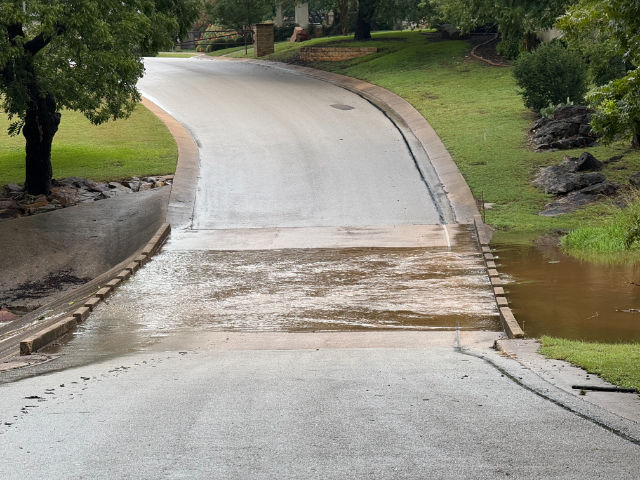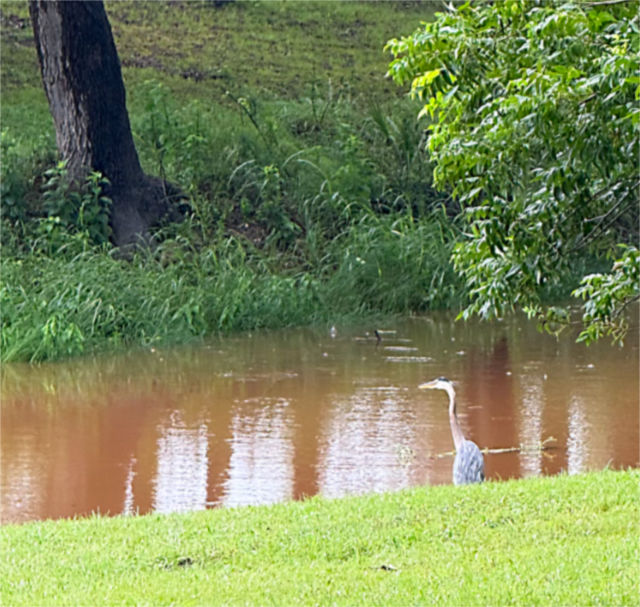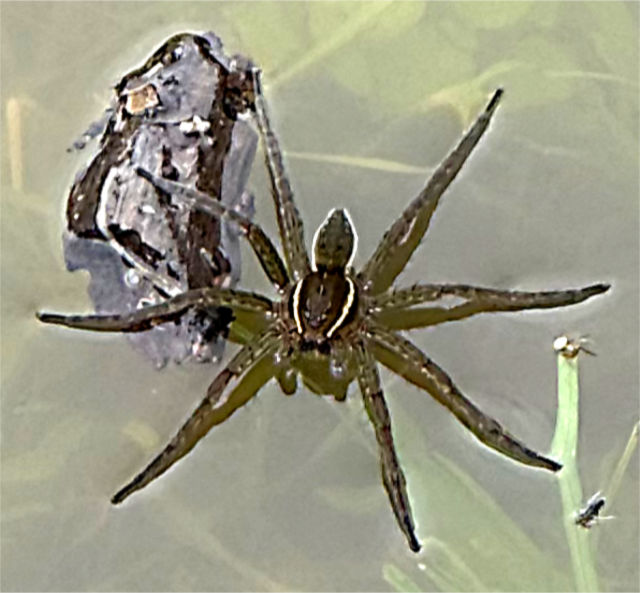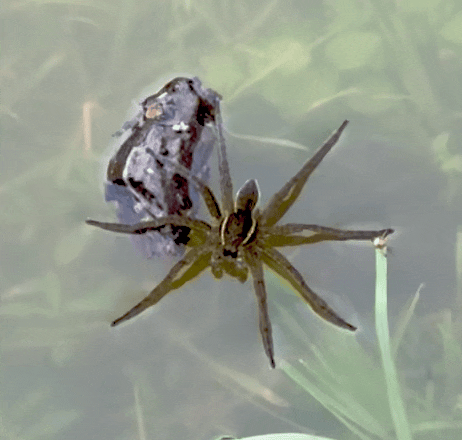Here’s a question for you: what has eight legs and walks on water?
If you answered “Jesus and three of His apostles,” well…that’s not exactly the response I was looking for, but I’d be very interested in seeing the translation of the Bible you’re working from.
But if you answered “a six-spotted fishing spider,” then you’re more than ready for the arachnology category of Jeopardy. More about that in a moment. The spiders, that is, and not Jeopardy.
I’m not a fan of spiders. I make no apologies for my arachnophobia, and I feel [somewhat] the same way about them that some people feel about snakes. You know, the only good snake is a ________ [fill in the blank according to your sensibilities] snake.
Don’t get me wrong. I’m not anti-all-spiders. The ones who live outdoors are generally OK. It’s a live-and-let-live thing, as long as their lives don’t involve rooms where I occasionally go barefoot, and as long as they pull their weight by eating their weight in mosquitos. And I have observed and documented some pretty interesting things, like this battle between a yellow garden spider and a beetle. But, overall, I’d just as soon pretend that spiders don’t exist.
So it makes me a bit nervous to learn that not only are they in our house, and in our garden, and in the wild areas outside our lawn (never shine a flashllight through your fence at night; those tiny reflected sparkles in the weeds and bushes aren’t fairies, they’re — you know — spider eyes), but in the creek that runs behind our house.
We were thankfully spared from the worst of the destructive rainfall that tormented much of the Texas Hill Country* last week. Our neighborhood received between six and seven inches of rain, most of it slow and steady, but one downpour resulted in some minor flooding of Pecan Creek, enough that the City closed the gates to the low water crossing which is a half block from our house.
On Saturday (July 5th), I walked down to that crossing to see how high the water rose. It was flowing over the street, but not really that deeply.

Heavy rains often bring out interesting scenes of nature, and I was prepared to take some photos and videos if that was the case that day. The first subject was this Great Blue Heron that inhabits a long stretch of our creek.

I took a photo just before it dived into the water after a fish. I couldn’t tell whether it was successful, but I did get a short slow-motion video of it emerging from the creek.
I’m pretty sure that at the end of the video, it still had water in its ears, because that’s my normal behavior after diving into a pool.
The bird was cool, but that’s not really what fascinated me that morning. What captured my attention were movements on the surface of the water that generated scenes like the one shown at the top of this page. If you look closely at the upper left portion of that photo, you might be able to make out the shape of a spider. That’s the aforementioned Six-spotted fishing spider (Dolomedes triton), along with the wake it left behind as it moved across the relatively calm surface of the creek. Here’s what they look like when motionless:

The term “motionless” is relative, though:

As I looked more closely at the surface of the creek, I realized that the water was literally crawling with these spiders. Some were tiny; others big enough to carry your cat away (well, they looked that big in MY mind! In reality, the largest ones were probably two inches in width from leg to leg to leg to…). According to the Wikipedia article linked above, the tiny ones are males. The big and creepy ones are females but don’t read anything into that.
Anyway, I had to admit that they were fun to watch as they cavorted across the water (be patient with the following video; the real action starts about eight seconds in):
They don’t swim as much as they hop across the water, and they’re quite speedy, so don’t think you could outswim them.
Here’s another short video that also shows the condition of the creek following the rains. It’s not usually that muddy and the weeds and lily pads are typically much more evident.
I never realized that the creek was home to so many of these creatures. They are quite skittish and will quickly flee from your presence, unless you’re actually a small fish or tadpole (in which case I’d love to hear more from you). Nevertheless, if any big-time TV producers are paying attention, I’d like to pitch a new idea to you. Instead of Shark Week, which, in my opinion, has jumped the shark, let’s come up with a few movies and documentaries for Aquatic Spider Week. It doesn’t take a great leap of imagination to generate a plot line for a mutant strain of these spiders, since they’re one of the few arachnid species that dine upon vertebrates. (Check out the Predatory Feeding section of Wikipedia for some disconcerting details).
Enough of the silliness; it’s my way of avoiding the realities of having to coexist with spiders. Like snakes, they do play a role in our ecology, if only just enough to keep me from swimming in the creek.
By the way, while all of this was new to me, I’m sure that the boat and dock owners in our area have known about these and other species of spiders forever. Spider control is a huge issue around our lakes, and exterminators stay plenty busy trying (and generally failing) to decimate the population. As the humans in Jurassic Park have learned, life finds a way.

*If you’re interested and able to contribute to the flood relief efforts in Central Texas — the needs are overwhelming — in our specific neck of the woods, Ark of Highland Lakes has been designated as the coordinator for those efforts. Please consider donating to their efforts. We’ve done that. [return]
Discover more from The Fire Ant Gazette
Subscribe to get the latest posts sent to your email.

